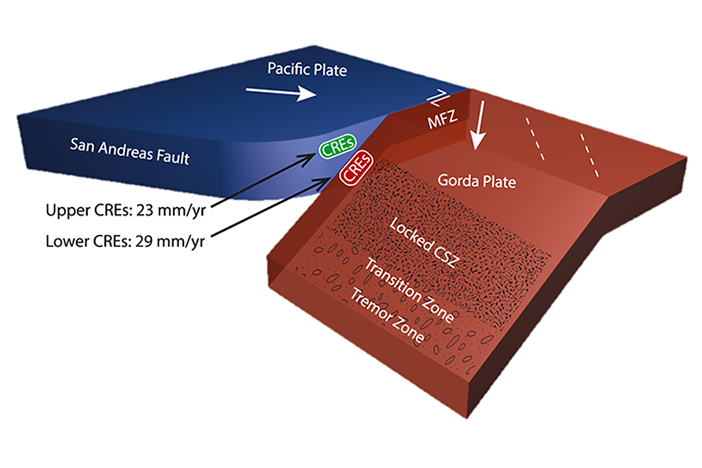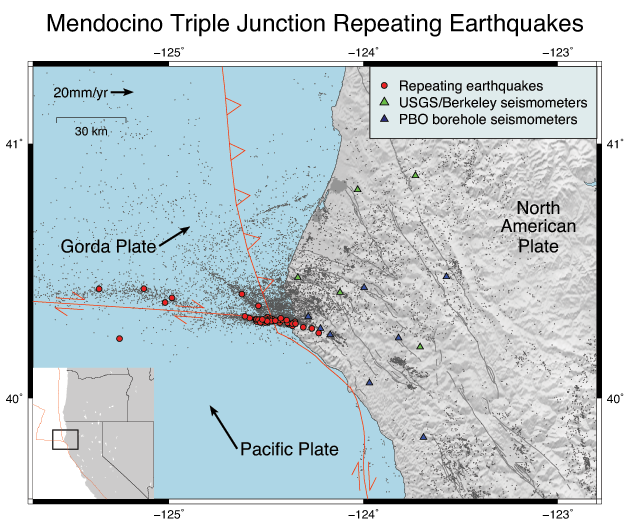Research Update: Aseismic Creep on the Mendocino Fault Zone

The Pacific Plate meets the Gorda Plate at the Mendocino Fault Zone. Characteristically repeating earthquakes (CREs) can be used to determine the rate of creep, or fault movement without an associated earthquake.
Continuing their research on repeating earthquakes at the Mendocino Triple Junction, the place where the Pacific, North American, and Gorda plates collide, BSL researchers Kathryn Materna, Taka'aki Taira, and Roland Bürgmann have further characterized the "creep" on the Mendocino Fault Zone at the edges of the Pacific and Gorda plates. Their most striking finding suggests a region of persistent aseismic slip on the Mendocino Fault Zone just offshore of northern California. Their research also identifies sequences of repeating earthquakes that can be used in the future to study transient aseismic creep events, such as triggered creep in response to nearby earthquakes. They present their findings in this month's Geophysical Research Letters.
Complicated Creep where Three Plates Meet
Earthquakes with magnitudes bigger than 6 rock the tiny community of Petrolia in Humboldt County, CA with an astonishing frequency. The faults that produce these quakes are mostly offshore, part of the Mendocino Triple Junction where three tectonic plates meet. Their locations make them particularly difficult to study.
Aseismic creep, movement of the ground along a fault in the absence of earthquakes, is an important characteristic of faults. To get at the aseismic creep rates in the Mendocino Triple Junction, Kathryn Materna and colleagues analyzed so-called repeating earthquakes - earthquakes that occur when the same patch of ground fails over and over again. Materna’s code processed eight years of Cape Mendocino earthquakes, comparing the seismic signatures (waveforms) of each event and sorting them into “families.” From each family, Materna inferred a rate of creep on a specific section of a fault.
In her presentation “Measuring aseismic slip through characteristically repeating earthquakes at the Mendocino Triple Junction, Northern California,” which won an American Geophysical Union Outstanding Student Paper Award, Materna finds a high creep rate at the transform boundary between the Pacific and Gorda Plates. Closer to shore, beneath the North American Plate, the data suggest a more complicated and depth-dependent pattern of deformation. By analyzing the growing dataset of repeating earthquakes, Materna and coauthors are gaining new insights into the present-day tectonics of the Mendocino Triple Junction. Interestingly, their dataset also shows that creeping faults in the Mendocino Triple Junction can increase or decrease their creep rates in response to nearby large earthquakes.
